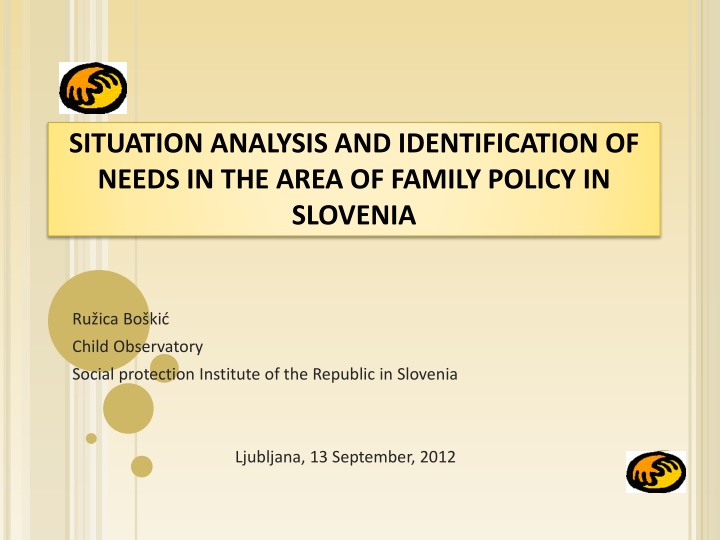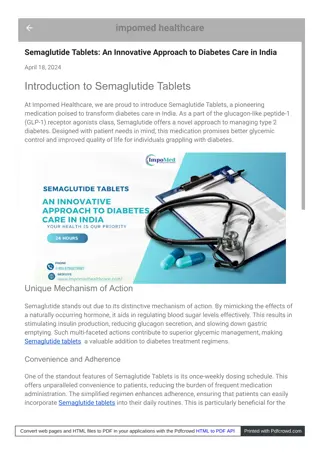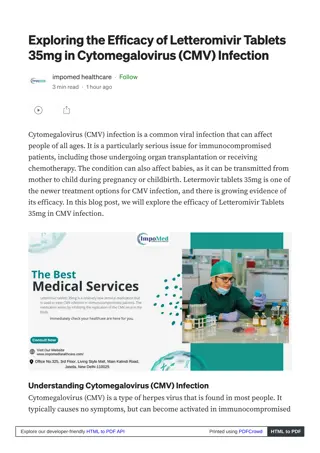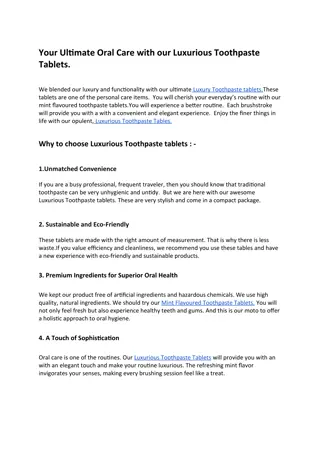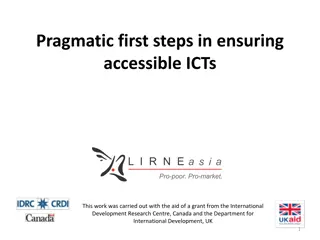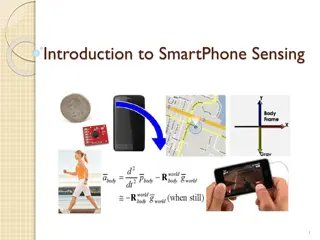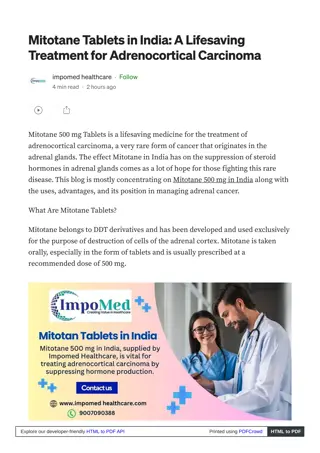Protecting Data on Smartphones and Tablets
Protect your sensitive data on smartphones and tablets from memory attacks by understanding the motivation, threat model, memory attacks, and available solutions. Learn about the background of System-on-Chip technology and on-SoC storage options like iRAM and Locked L2 Cache.
Uploaded on Apr 21, 2025 | 1 Views
Download Presentation

Please find below an Image/Link to download the presentation.
The content on the website is provided AS IS for your information and personal use only. It may not be sold, licensed, or shared on other websites without obtaining consent from the author.If you encounter any issues during the download, it is possible that the publisher has removed the file from their server.
You are allowed to download the files provided on this website for personal or commercial use, subject to the condition that they are used lawfully. All files are the property of their respective owners.
The content on the website is provided AS IS for your information and personal use only. It may not be sold, licensed, or shared on other websites without obtaining consent from the author.
E N D
Presentation Transcript
SITUATION ANALYSIS AND IDENTIFICATION OF NEEDS IN THE AREA OF FAMILY POLICY IN SLOVENIA Ru ica Bo ki Child Observatory Social protection Institute of the Republic in Slovenia Ljubljana, 13 September, 2012
Data are taken from the analysis: Background for the new resolution on family policy 6 areas were analysed: family; family allowances and parental care; health; labour market and employment; housing; preschool education.
BASIC INFORMATION ABOUT FAMILIES IN SLOVENIA o Population census 2011 567.347 families (1991 551.899 families, 2002 555.945 families) Trends in family composition the last three censuses (in %) Single mother with children Married couples with children Couples not married with children Single parent families Single father with children Year 1991 59,0 2,2 18,0 15,4 2,6 2002 53,0 5,3 18,8 16,2 2,6 2011 41,9 8,7 25,2 21,1 4,1 o Average age of first time mother: in 1991 25, in 2010 28,7 o Average age of the first time father: in 1991 29,5 in 2010 32,5
CHILDREN Number of children in Slovenian families 4 and more children Year All families 1 child 2 children 3 children 2011 567 347 233 084 159 555 30 633 6 401 Share of children in Slovenian population Year 0 14 years old 0 18 years old 1995 18,5 24,2 2000 16,1 21,7 2005 2010 14,4 14 19,3 18,1
MATERNITY AND PATERNITY LEAVE Maternity leave: 105 days (28 days before birth); Paternity leave: 90 days (of which 15 paid; social security contributions are covered for the rest); Fathers that have taken the paternity leave
PARENTAL LEAVE Parental leave: 260 days per family Parental leave taken by fathers: Almost 1/3 persons in survey in 2010 (20-49; representative sample) did not know that parental leave in Slovenia can be taken by any parent, not by mothers! If father would take at least 3 months of parental leave, then 9 % women would decide to have another child 68 % of all persons in a survey in 2009 think that 1 year leave (maternity + parental) is long enough
CHILD ALLOWANCE Child allowance: in 2010 79 % persons in survey; 2/3 child allowance is low 1/3 child allowance is high enough In 2010 survey most people (55 %) preferred child allowance that is based on the family income (25 % equal child allowance for all; 18 % only for families with low income) new legislation (2 acts; impact assessment is needed)
MATERIAL STATUS Poverty: in 2010 - 10,5 % households with children lived in poverty; - 12,6 % children lived in poverty At-risk-of-poverty rate (in %):
HEALTH Most health indicators show positive overall health status of families in Slovenia Especially data about Infant mortality rate (the number of infant deaths (aged 0-365 days) per 1000 live births)
HEALTH Provision of health care staff corresponds to the normatives at the national level regarding the number of patients per one personal physician Reproductive health poor data, no national database! The number of children born out of in vitro fertilization is rising: 2005 3,8 % of all born children 2007 4,6 % of all born children Leave for care of ill family member: In 2011 80,6 % of women and 19,4 % of men used it. Women between 20-44 years of age are most burdened category in this respect.
HOUSING o Housing is the most problematic area for Slovenian families! o Housing as financial burden for large share of families housing costs represent heavy financial burden (in %):
HOUSING AND ENVIRONMENT Parents and adult children living together (children from 25-34 years old, in %): Poor transport connections in some regions
EMPLOYMENT AND LABOUR MARKET High employment rate of women also/especially when they have children Double burdens for women work and home obligations (unpaid and care work) Young people and labour market
CHILDCARE Barcelona targets for both age groups are nearly met Good public kindergarten network One of the biggest problems is preschool care when parents return to work after parental leave
THANK YOU FOR YOUR ATTENTION! www.irssv.si
